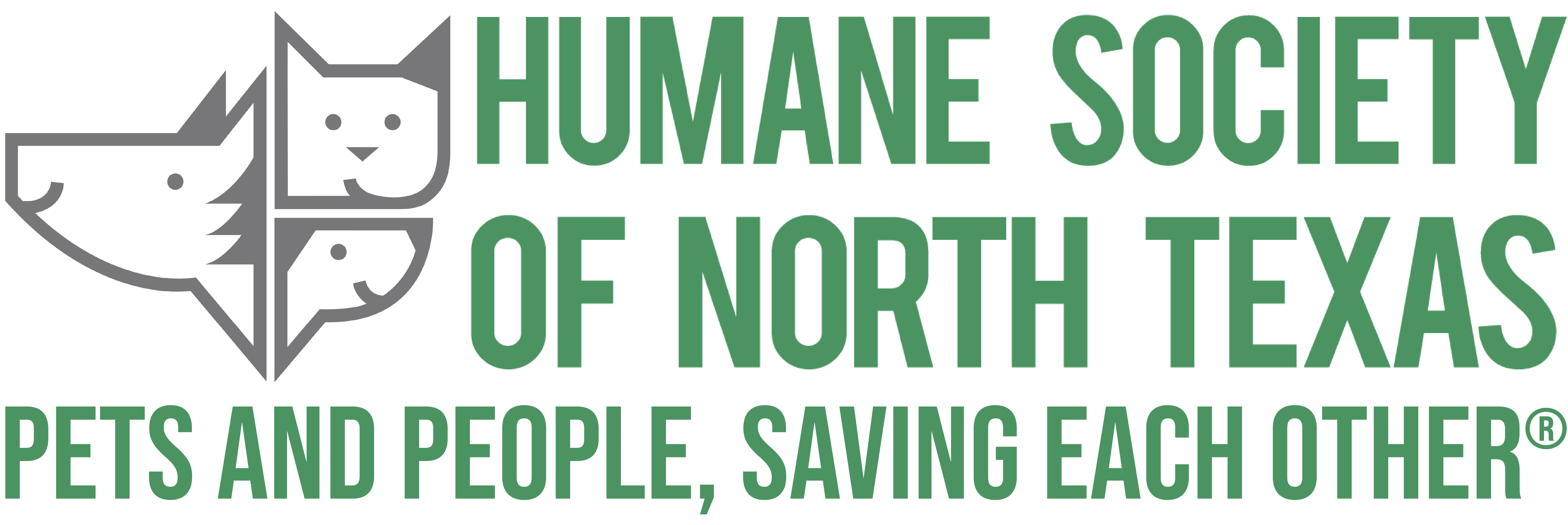Introducing Your New Puppy To Your Senior Dog
- Humane Society of North Texas
- Apr 30, 2021
- 3 min read
Updated: Feb 28

Adopting a new puppy is an exciting time! But, you may be wondering how you will help your older dog at home adjust to your new bouncing bundle of joy. Puppies are new to the world and don't have the social manners that your older dog knows. With some preparation, however, you can make the meeting a success.
Here are some tips and tricks for preparing your senior dog for the big change!
Before the Introduction Before Bringing Puppy Home:
Put away your older dog’s favorite chews and toys, to avoid territorial behavior.
Create spaces in your home where both dogs can get away from the other.
Purchase separate food dishes to prevent possessive aggression.
Ensure both dogs are up-to-date on their vaccinations.
During the Introduction
Your older dog considers your house his house. In order to prevent territorial aggression, find a neutral area to introduce the older dog to the new puppy. Put your older dog on a leash while another person holds the puppy on a leash. However, let them sniff and meet each other; there’s no need to hold them tightly to your side. You don’t want them to feel restricted, tense, or stressed.
The initial introduction should be relatively quick.
Stay calm throughout. Your dog can sense tension within you and is more likely to be stressed if you are. Your dog will take your emotions into consideration throughout the introduction. He looks to you to understand how he should react to a situation. See it in action here!
Entering Your Home
For the first week or two, the older dog and puppy should be continuously monitored to ensure the dogs are comfortable with one another. Follow your older dog’s regular routine. Begin establishing a routine for the puppy as well, to provide necessary structure.
Watching your dogs’ body language for the first several weeks will help you gauge how they’re reacting to one another. If the puppy is young, he may not understand the body language of the adult dog very well. For instance, the puppy will likely want to engage in playtime even if the older dog is showing signs of discomfort.
What body language should you watch out for?
Raised fur on the back of the neck/back
Prolonged stares
Growling
Snarling
Display of teeth
Hunched back

What Not to Do
What’s off limits?
Do not allow the older dog to bully the puppy
Do not, ever, allow the two dogs to fight
Do not hold the puppy in your arms during the introduction
Do not force them to be together
Do not allow them to share a crate. Purchase a new crate for the puppy so both dogs have their own space.
What to Do Instead
Do allow them to get used to one another at their own pace
Do introduce them in a neutral area
Do allow them to escape to their crate if desired
Do feed them in separate areas
Do spend quality time with them separately
Do allow them to interact positively if desired
Do allow them to play with supervision
Do supervise them at all times for the first several weeks
The Takeaway
Following the steps above will result in an easier transition for both the puppy and the older dog. They’re both likely to feel more comfortable with one another and become friends faster if you help them get to know each other comfortably. A peaceful home is good for everyone—human and canine alike. Plus, puppies can bring new life and excitement into the life of our elderly dog!
HSNT always encourages a Meet & Greet prior to adopting a new pet into your home. By meeting our pets together, you will learn a lot about their personality, behaviors, and their initial reactions with one another. Click here to schedule an adoption appointment to meet your new best furry friend!
Pets and People, Saving Each Other™
HSNT’s mission is to act as an advocate on behalf of all animals and to ensure their legal, moral and ethical consideration and protection; to provide for the well-being of animals who are abandoned, injured, neglected, mistreated or otherwise in need; to promote an appreciation of animals; and to instill respect for all living things.



When it’s time to make the introduction, choose a neutral location. Hold your older dog on a leash while someone else holds the puppy. Let them sniff each other without feeling too constrained; this helps reduce stress and tension! Or maybe just have fun with geometry arrow to help me relax.